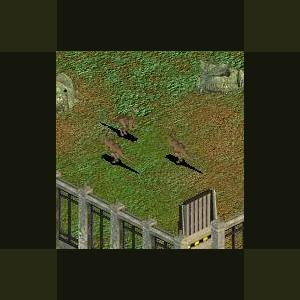About This File
Pisanosaurus
Pisanosaurus mertii (the name comes from "Pisano", who was an associate of the finder, and "saurus" meaning lizard or reptile) is a primitive bipedal Ornithischian dinosaur from the Late Triassic.
Pisanosaurus was 3.2 feet (1 meter) in length and 12 inches (30.48 centimeters) in height. Its weight estimate is just under 8.8 pounds (four kilograms). These estimates vary due to the incompleteness of the fossil.
Pisanosaurus is known from a fragmented skeleton found in Argentina. It is very basal within Ornithischia; the postcrania seem to lack any good ornithischian synapomorphy; it has even been suggested the fossil is a chimera.
Pisanosaurus (meaning "Pisano lizard") is a genus of primitive ornithischian dinosaur from the Late Triassic of what is now South America. It was a bipedal herbivore described by Argentine paleontologist Rodolfo Casamiquela in 1967. Only one species, the type, Pisanosaurus mertii, is known, based on one partially complete skeleton. The fossils were discovered in Argentina's Late Triassic Ischigualasto Formation, from around 228 to 216.5 million years ago.
The exact classification of Pisanosaurus has been the topic of debate by scientists for over 40 years; the current consensus is that Pisanosaurus is the oldest known ornithischian, part of a diverse group of dinosaurs which lived during nearly the entire span of the Mesozoic Era.
Based on the known fossil elements, Pisanosaurus was a small, lightly-built dinosaur approximately 1 m (3 ft 3 in) in length and 30 cm (12 in) in height. Its weight was between 2.27–9.1 kg (5–20 lb). These estimates vary due to the incompleteness of the fossil. The tail of Pisanosaurus has been reconstructed as being as long as the rest of the body, based on other early ornithischians, but as a tail has not been recovered, this is speculative. It was bipedal and, like all ornithischians, was probably exclusively herbivorous.
Pisanosaurus mertii was described by Argentine paleontologist Rodolfo Casamiquela in 1967. The name Pisanosaurus honors Juan A. Pisano, an Argentine paleontologist, while saurus is derived from the Greek sa????, meaning "lizard". Pisanosaurus is known from a single fragmented skeleton found in Argentina. It is based on a specimen given the designation PVL 2577, which was discovered in the Ischigualasto Formation.
The fossils of Pisanosaurus were discovered in Argentina's Ischigualasto Formation. Originally dated to the Middle Triassic, this formation is now believed to belong to the Late Triassic Carnian stage, around 228 to 216.5 million years ago. Pisanosaurus shared its habitat with rhynchosaurs, cynodonts, dicynodonts, prestosuchids, ornithosuchids, aetosaurs, and primitive dinosaurs. The early carnivorous dinosaur Herrerasaurus lived in this area and at this time, and may have fed upon Pisanosaurus.



Recommended Comments
There are no comments to display.
Create an account or sign in to comment
You need to be a member in order to leave a comment
Create an account
Sign up for a new account in our community. It's easy!
Register a new accountSign in
Already have an account? Sign in here.
Sign In Now